I was in Glasgow recently, and lucky enough to visit the Kelvingrove Art Gallery and Museum . The grandeur of the building itself is worth a visit. The organ playing was a memorable experience, as was seeing the beautiful paintings in the Glasgow Boys Gallery and the products in the Mackintosh and The Glasgow Style Gallery.
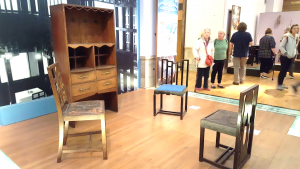
The latter was particularly interesting: It was predominantly furniture. Interesting and dramatic chairs skulked about, on low platforms, grouped like friends in circles, and it was clear to see visually how chair design had changed around the 1890s.
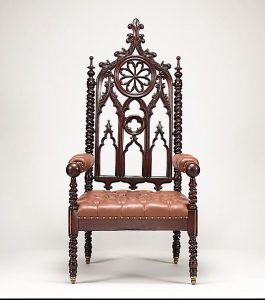
Source www.dezeen.com
Pre 1890s the chairs were elaborate carved turned styles often in dark woods. This 1850s mahogany armchair by John and Joseph Meeks is typical of that time.
After 1890 Chair design morphed away from turned spindles, fancy carved antique styles into more experimental use of materials and striking shapes. European designers and architects, including Charles Rennie Mackintosh and George Walton rethought the principal elements and features of furniture. The most dramatic were their designs for chairs, playfully using exaggerated features, cut out shapes and dramatic lines. Instead of a chair just being an utilitarian everyday artefact it was given personality and drama!
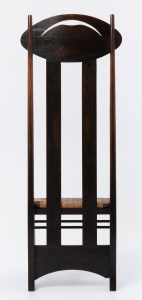
Charles Rennie Mackintosh argyle chair .Source: www.dezeen.com
You can read more about this argyle chair if interested, at https://www.dezeen.com/2018/06/07/charles-rennie-mackintoshs-argyle-chair-150-anniversary/
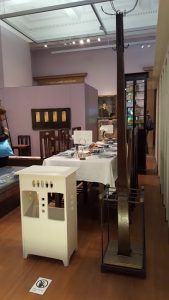
In parallel with the evolvement, the simple lines are now the focus of the interiors. Unlike the cluttered Victorian era the interiors are noticeably cleaner, the woods are lighter, the lines less elaborate.
Activity
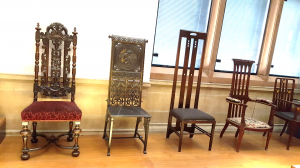
Compare and contrast the chairs in the photo above.
- Which ones do you think are pre 1890s and post 1890s, and why?
- Christopher Dresser studied ornaments and his style paved the way to improve 19th Century British Design. The Arabian and medieval patterns he observed influenced his pierced patterns on his chairs .Which one(s) do you think might be a 19th Century Christopher Dresser Chair?
- Charles Renie Mackintosh favoured the use of square cut outs. Can you spot his chair here?
- In the first photo at the beginning of the blog, there is another famous Charles Rennie Mackintosh chair , which he designed on commission for the Ingram Street Tea Room. To check you spotted it correctly, you can check here if you like https://www.theglasgowstory.com/image/?inum=TGSE01089
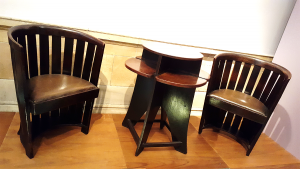
The gallery showcases several iconic Mackintosh pieces, including this above Domino table (circa. 1907) also from the Ingram Street Tea Rooms.
Mackintosh’s ‘square-ness’ inspired some designers in Vienna to experiment and resulted in some great furniture and products, such as pieces by Josef Hoffman (for the curious, Hoffman’s work is featured at https://www.neuegalerie.org/collection/artist-profiles/josef-hoffmann.)
Furniture continues to change, sometimes because of new manufacturing processes, sometimes linked to fashion, changes in society or industrialization, economic or space based choices. Consumers may favour modern styles, retro looks, reproduction antiques or inflatable pack-away furniture or so many other types, and there is a plethora of choice available.

Leave a Reply